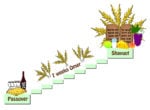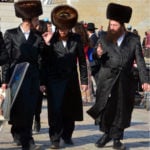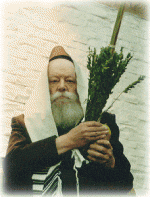From Superposition to Simchah: Sukkot and the Joy of Collapsed Doubt
“Ein simchah ke’hatarat ha-sfeikot”—there is no joy like the resolution of doubt. On the eve of Rosh HaShanah, our sages describe a cosmic pause: the
“Ein simchah ke’hatarat ha-sfeikot”—there is no joy like the resolution of doubt. On the eve of Rosh HaShanah, our sages describe a cosmic pause: the

And ye shall take you on the first day the fruit of goodly trees, branches of palm-trees, and boughs of thick trees, and willows of

There is a Biblical Commandment to count the days between the Passover and Shavuot, the “Feast of Weeks” (a.k.a. Pentecost). We start counting on the

Jews have a very strange custom to take four species (Heb. arba’a minim)—a fruit of a citron tree (etrog), a branch of a date palm (lulav), boughs from the myrtle tree (chadassim),

Today is Chol Hamo’ed Sukkot – the intermediate days between the first and the last days of the holiday of Sukkot. These days are not

And ye shall take you on the first day the fruit of goodly trees, branches of palm-trees, and boughs of thick trees, and willows of

The months of Tishrei is full of holidays, and they all share a common theme—the unification of time—past, present, and future. It all starts with

Why is this night different from all other nights, asks a child on the Seder night. On this Simchat Torah I asked a different question—why

Albert Einstein had a lifelong quest—to develop a unified field theory—the theory that would describe as a single field gravity and electromagnetism (just as Maxwell
Last week Torah portion, Emor, speaks about the prohibition of working on Shabbat. In fact, the Talmud enumerates precisely 39 categories of labor forbidden on